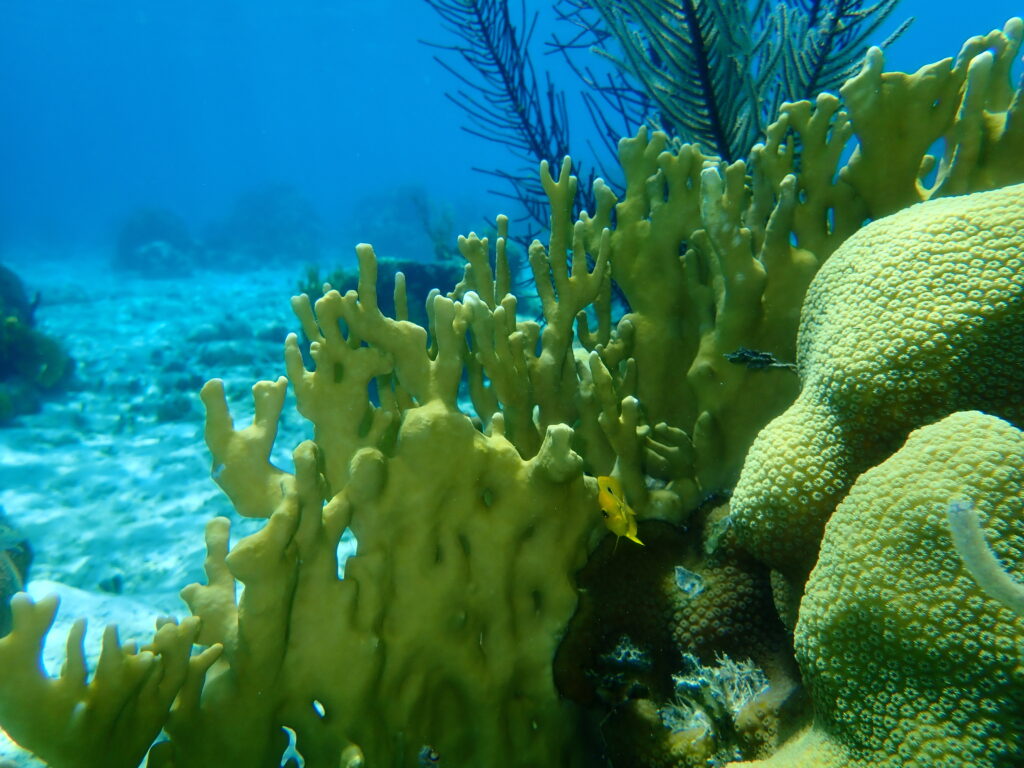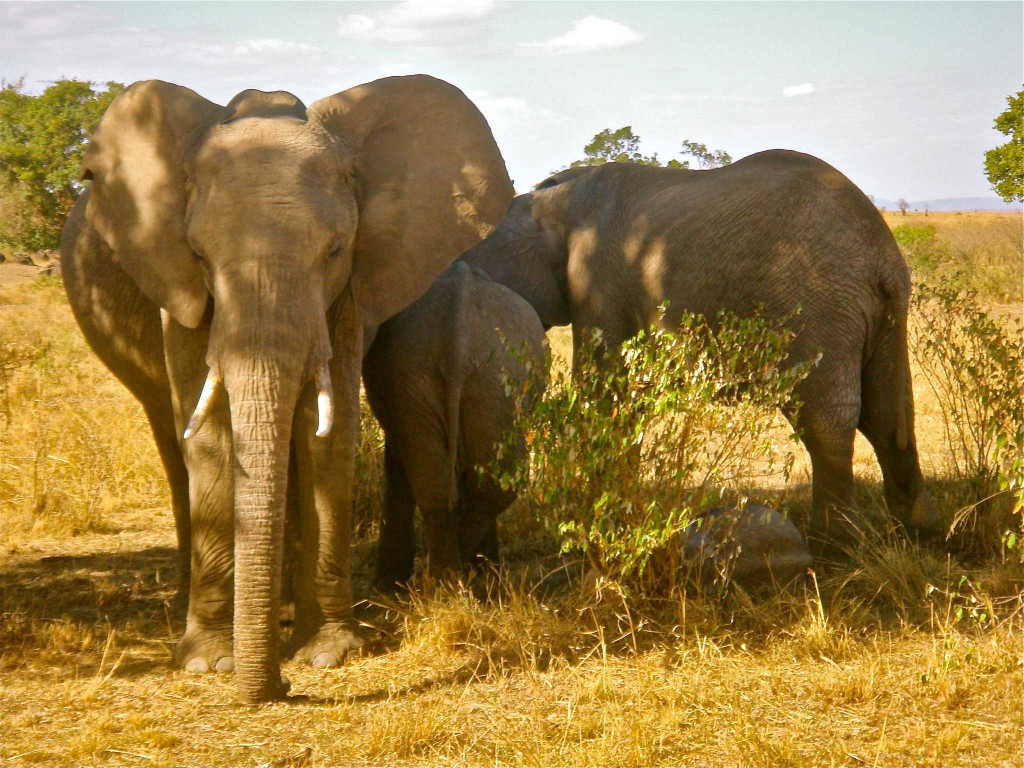
“We are expanding the toolkit available for conservation,” says Bridget Baumgartner, Director of Research and Development at Revive & Restore. “We’re a technology-focused organization with a network of technology experts – we’re here to help make researchers in this space as successful as possible.”
Bridget manages the Catalyst Science Fund for the non-profit Revive & Restore. This program has awarded more than 70 grants to researchers applying biotechnology tools in a unique way to support genetic rescue of endangered or extinct species. The fund was launched in 2018 with a $3 million pledge from Promega, and this year celebrated its fifth anniversary. In that time, projects supported by the Catalyst Science Fund have cloned a black footed ferret, developed methods for analyzing population genetics of isolated elephant herds, and much more.
“The donation from Promega enabled us to demonstrate that this long-term ‘Go Big or Go Home’ approach can create new capabilities that are going to be high-impact for wildlife conservation,” Bridget says.
High Risk, High Reward
The big problem, Bridget explains, is that researchers struggle to secure funding for risky, proof-of-concept research. Traditional research funding models favor proposals that are more likely to succeed, while Revive & Restore adopts a ‘fail fast’ attitude toward high-risk, high-reward projects. She points to the peer-reviewed grant process at the National Science Foundation as a format that is engineered to produce incremental progress consistently and reliably. However, the NSF rarely funds projects that are equally likely to be revolutionary or a bust. Revive & Restore aims to de-risk these ideas so that they can ultimately be embraced by larger, more risk-averse institutions.

The mission of Revive & Restore is to “enhance biodiversity through the genetic rescue of endangered and extinct species.” The organization takes a three-pronged approach to innovation by convening partners, advancing technology solutions and funding proof-of-concept research to accelerate technological solutions that improve conservation practices and outcomes.
The Advanced Coral Toolkit program is one example of how the organization embraces risk-taking. There is little historical literature on genomics methods for coral, particularly because the invertebrates seem alien when compared to human biology. With the Advanced Coral Toolkit, Revive & Restore promotes the adoption of biotechnology methods for coral rescue and conservation. However, they were surprised when the first round of projects was overwhelmingly successful.
“In hindsight, DNA is DNA, so why wouldn’t they work?” Bridget asks. “That told us we weren’t being aggressive enough, so for the next batch of proposals we upped the ante. We know the tools work, so we want to see a greater impact in how they’re applied.”
Today, projects in the Advanced Coral Toolkit are using gene expression and proteomics to upend conventional wisdom on coral bleaching and analyzing the molecular mechanisms of hybrid fitness in rising water temperatures. Earlier this year, researchers from the Smithsonian’s National Zoo and Conservation Biology Institute, funded through the Catalyst Science Fund, published the first technique for cryopreserving and reviving entire coral fragments, a critical capability for safeguarding genetic diversity in endangered species.
“We’ve seen that the idea of using these technologies with coral is not crazy,” Bridget says, “So now we can push a little harder and pursue a greater impact without having to worry about whether the tools themselves will work.”
Out of the Lab, Into the Wild
The projects supported by the Catalyst Science Fund aren’t meant to stay in the lab. Revive & Restore encourages scientists to work directly with conservation professionals to demonstrate biotech solutions to real-world problems.
“We’re convincing wildlife professionals that there are tools out there that they haven’t been taking advantage of,” Bridget says. “Genomics has traditionally been thought of as a medical kind of technology, but when you adapt those same tools for wildlife situations, they can help you make much more informed decisions about the management of a population of endangered species.”

For example, a current project led by post-doctoral researcher Andrew Tighe at University College Dublin is using single-nucleotide polymorphism (SNP) analysis to study an isolated population of elephants in the Arabuko-Sokoke coastal forest in Kenya. These elephants are hard to reach – they’re surrounded by dense forest and difficult to track. Officials are interested in building a wildlife corridor to connect the group with the larger elephant population in a nearby preserve. However, before they can justify the work and resources, they have to answer some basic but important questions. How many elephants are in the isolated population? Are they related to the larger herd?
During the dry season, there’s a brief period when all the animals in the area convene on the same water source. And every animal has to do the same thing – poop. Andrew devised a PCR assay that can use dung samples to get demographic information about the elephants in the area. Working with a university in Kenya, he’s training local scientists to run the assay and gather the critical data for informing the wildlife corridor initiative.
“The genetic information gives the wildlife managers a much clearer picture of what’s going on with this elusive population,” Bridget says.
Intended Consequences
Elephants are exciting. People love elephants. They’re considered a “charismatic species” – a species with so much popular appeal that it’s often used for publicity by environmental groups. Coral, while perhaps less cute, is also charismatic in its own right, with its vibrant colors and close association with tropical tourism.
But there are countless vulnerable species with no devoted following that are just as critical to their respective ecosystems. Research on these species is often underfunded, simply because they aren’t as good at tugging on heartstrings. The projects funded by the Catalyst Science Fund don’t just focus on the flashy species like elephants and coral, they spread the love to organisms like the humble sea cucumber.
“There’s nothing furry or cute about it, but the proposal was written in such a beautiful way that you really wanted to root for these brown sea cucumbers,” Bridget says. “They’re an important commercial fishing product, but they’re being overhunted. The sea cucumber genome project will help balance the human need and the ecological need.”
Conservation is full of philosophical and ethical questions. The allocation of resources to charismatic and non-charismatic species is one Revive & Restore deals with often. Their biggest ethical conversation, however, is around the decision to intervene in the first place.
“Our mindset is focused on intended consequences,” Bridget says. “We aren’t advocating to be reckless or irresponsible with these biotechnological interventions. But the consequences of inaction are too often left out of risk assessment.”
Revive & Restore works with conservation agencies like the US Fish and Wildlife Service to explore all possible strategies and outcomes, from complete inaction to bold biotechnology-based ideas. Revive & Restore explains how they aren’t creating unique species or inventing new biology. Elizabeth Ann, the first black-footed ferret clone, didn’t have anything novel hidden in her genome. She simply offered a pathway to reintroduce the missing genetic diversity that used to exist in the population. Similarly, the other projects in progress offer natural strategies to turn back or slow the clock on extinction.
“It’s not a choice between what we have today and some future that we can’t know for sure,” Bridget says. “We feel we have the impetus to go and fix the problems we’ve created in these ecosystems. If we can prove the technologies are safe and effective, we really ought to be considering all avenues.”
Related Posts
Latest posts by Jordan Villanueva (see all)
- Tackling Undrugged Proteins with the Promega Academic Access Program - March 4, 2025
- Academic Access to Cutting-Edge Tools Fuels Macular Degeneration Discovery - December 3, 2024
- Novel Promega Enzyme Tackles Biggest Challenge in DNA Forensics - November 7, 2024

Click On The Given Link To Read More Such Posts.
https://getblogour.com/how-do-i-register-and-log-in-on-infonet-nyp/